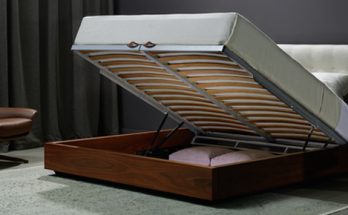
The problem is that the available alternatives have various issues – chipboards, for example, emit VOCs and are bad for your health. Eco-boards are difficult to recycle and upcycle. Many Asian countries have thought about using a very controversial material as a substitute to proper timber – yes, coconut palms.
The thing with palms is that when they reach 60-or-so years, they stop being economically viable with fewer and fewer nuts produced year by year. The old palms are simply cut down and burned or let to rot. Both burning and rotting produce greenhouse gases.
Meanwhile, it is possible to use palm timber to substitute wood. To take things even further, even the coconut husk can be used. It is called coconut fibres, coir or even kayar (depending where you stand on the globe).
Coconut fibre can be used to make ropes, filling for bedding, fish-nets and even insulation material.
For us, Europeans, the fact that coconut palms can have such a versatile use, bears a limited benefit. Yes, we can replace our junk synthetic mattresses with clean and healthy eco-mattresses made with coir but transporting coconut palm timber to Europe would probably add too big a carbon footprint to the cargo.
Coir is a relatively cheap material and makes for superb mattresses. I’m old enough to have experienced proper eco-friendly mattresses made of horse hair or seaweed. Before the synthetic junk beds came into fashion – there were much less allergies and asthmatic issues around. Is it just a coincidence? Nah…
What we can do, at least those of us who are keen on investing in emerging markets, is explore the possibilities of investment in Asian coconut plantations. It must be a good business – a discarded palm stem is worth up to $25 (at least that’s what the dealers pay the locals in Philippines and Indonesia).
An average plantation will have 100 palms per hectare, it must be a good business, considering the versatile things that can be made from palm timber – furniture, flooring, buildings, novelties etc. You can have this business idea and run with it – I’m not going to pursue it because I don’t know much about Asia. Just don’t forget to say thanks afterwards 🙂
Pic by Train to entertain via Creative Commons
